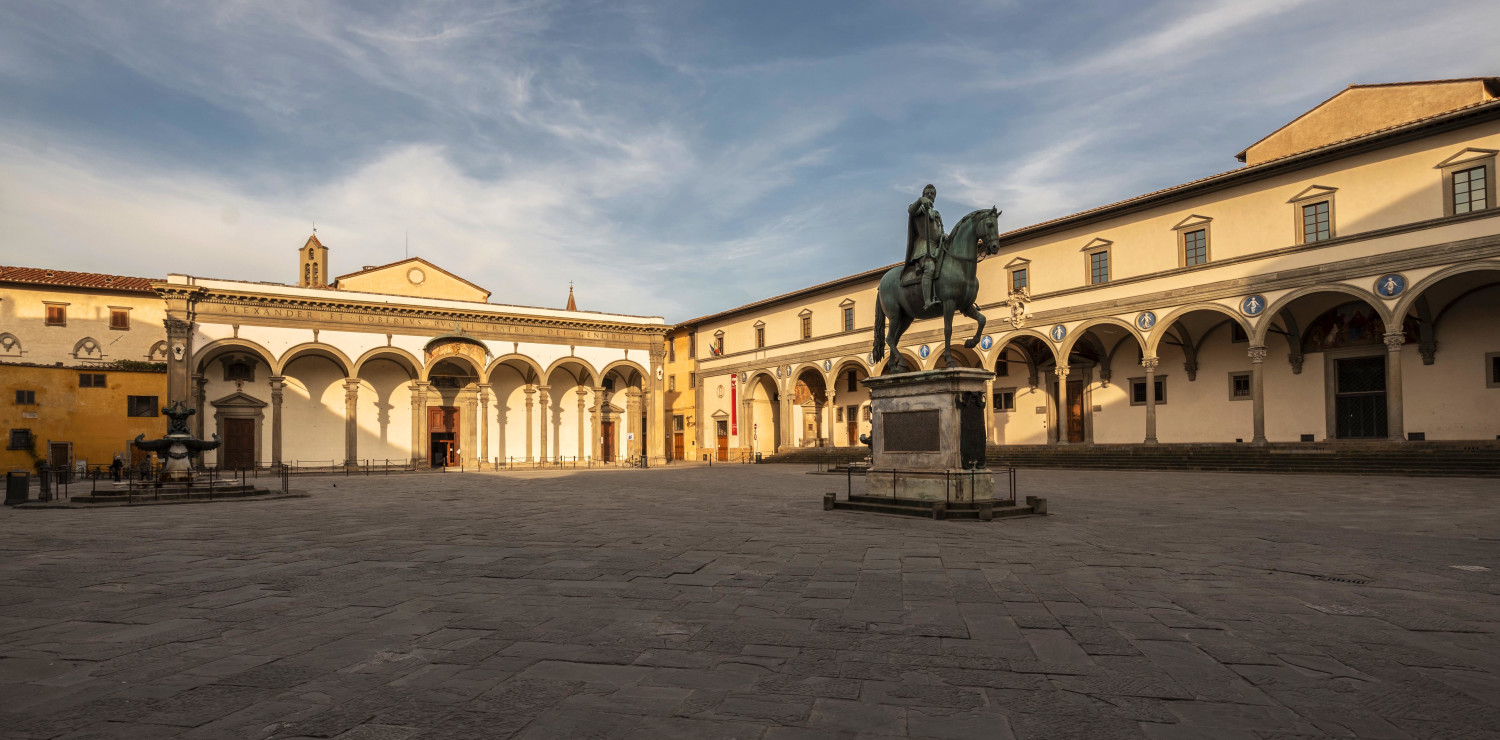Secret Florence: an itinerary to discover 8 mysterious legends you don't know
The most hidden and unusual places to see in the city
An open-air museum. Florence is ever amazing and fascinating with its world famous monuments. But the Renaissance city is also a treasure trove of mysteries and hidden secrets. Take a walk looking upwards and observe the most famous buildings. We shall take you on a journey to discover gems and curiosities that will enrich your stay in the city.
La Berta
Nestled as it is in the heart of one of the most beautiful historic city centres in the world, the Church of Santa Maria Maggiore risks being overlooked by passing visitors. Yet it is one of the city’s oldest places of worship, dating back as far as the 8th century. If you happen to pass by the namesake square, at the corner with Via de’ Cerretani, look for the severed bell tower, and raise your eyes: you will meet the gaze of a legendary character intent on scrutinising you in turn. The Florentines call it La Berta. The story goes that it has been there since 1326 because of the scientist Cecco d’Ascoli, following a curse he cast on a woman who, by denying him water, had prevented him from escaping the flames. Another legend identifies Berta as a fruit seller who donated a bell to the church to inform the workers with its chimes when the city gates were opening and closing.
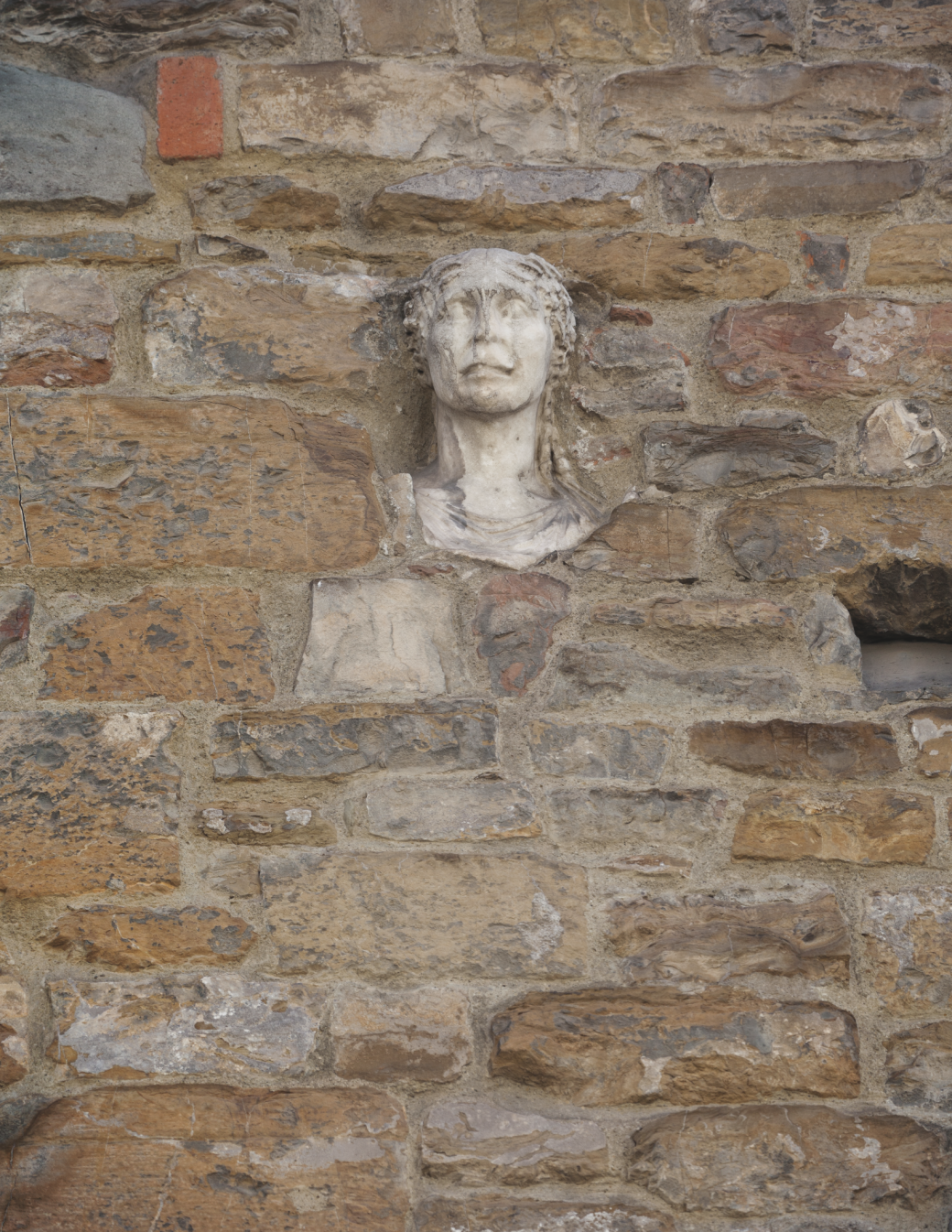 La Berta
La Berta The horned ox
What is a bovine head doing among the statues adorning the Duomo? According to tradition, the statue could be one of the builders’ tributes to the various draught animals used to transport the materials needed to build the Cathedral. However, there is another, more playful, version, according to which the head of the bovine (an ox) is said to be evidence of a betrayal. A foreman working on the cathedral building site is said to have had an affair with the wife of a baker, whose shop was located nearby. When the adultery was discovered, the baker denounced both his wife and her lover to the Ecclesiastical Court. Legend has it that it was the master builder himself who placed the bovine head facing the windows of the jealous baker to daily remind him of the betrayal.
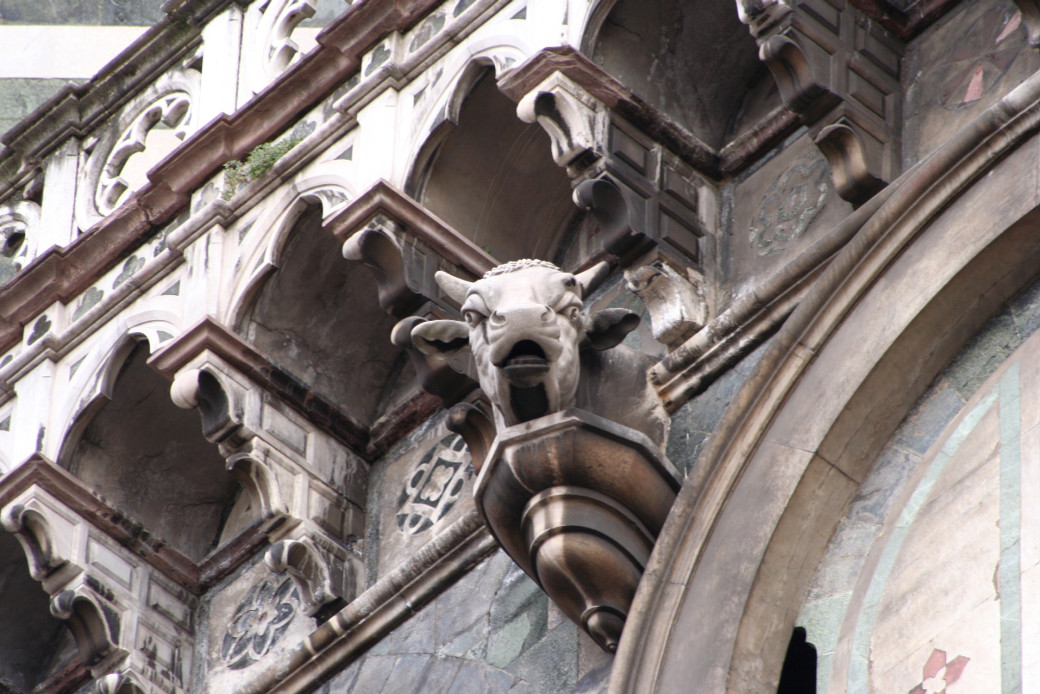 Il toro cornuto
Il toro cornuto Giambologna’s Devil
At a corner of Palazzo Vecchietti, precisely between Via de’ Vecchietti and Via Strozzi, we find a mysterious little devil keeping an eye on passers-by. It is a flag-carrying devil (the original by Giambologna is in the Bardini Museum), commissioned by Bernardo Vecchietti, former owner of the palace, to be installed on the site of an event linked to the life of Saint Peter the Martyr. The Saint was interrupted while preaching by a wild black horse, which could only have been the devil. He managed to immobilise the animal with prayers and crosses. Whether it is myth or reality is of little importance, the little devil is there in memory of this bizarre event.
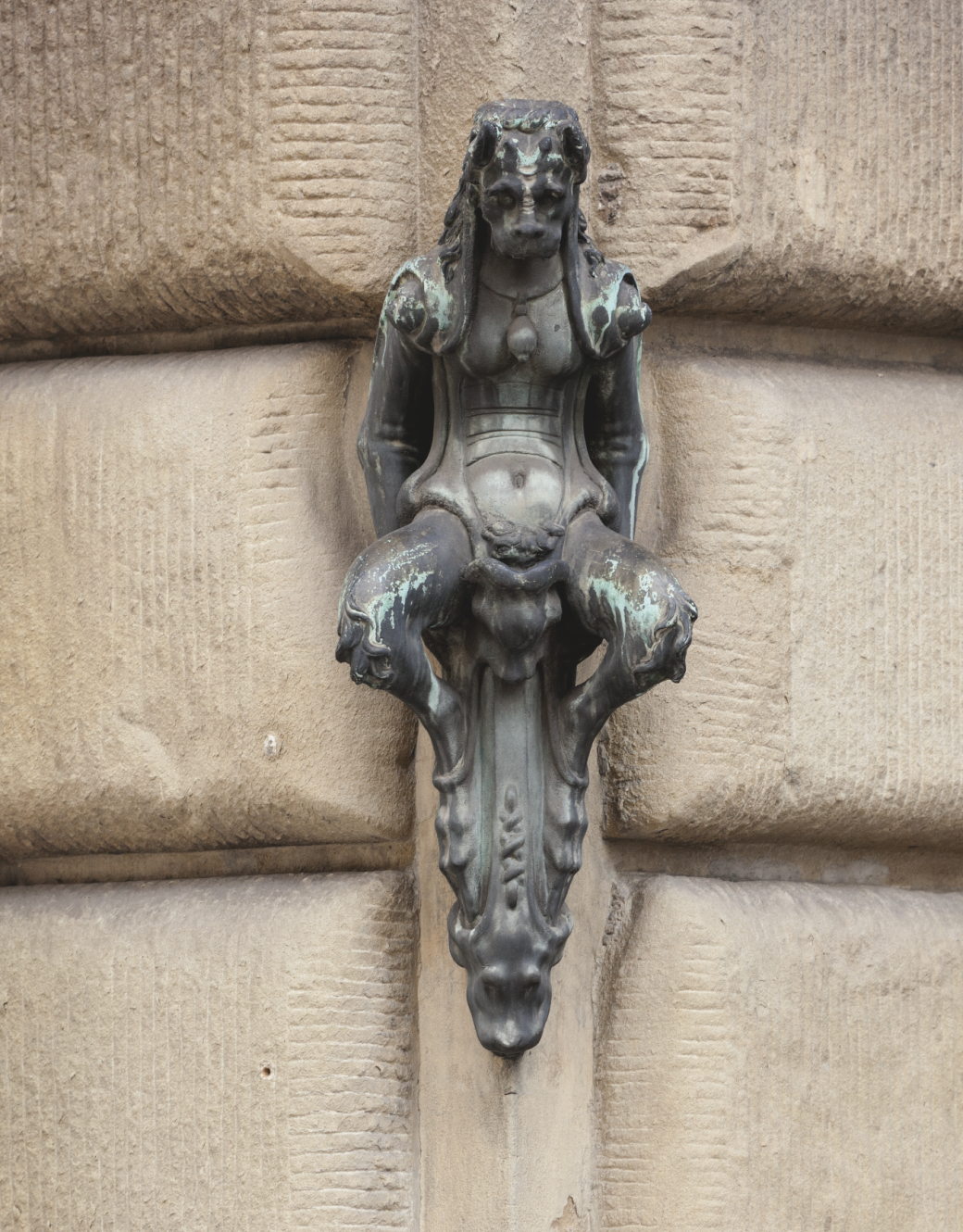 Il Diavoletto del Giambologna
Il Diavoletto del GiambolognaFace sculpted by Michelangelo
In Piazza della Signoria, just to the right of the entrance door to Palazzo Vecchio, near Via della Ninna, there is a portrait on the wall of a man in profile. The face bears the signature of Michelangelo Buonarroti, but nothing is known of whom it portrays. Some believe it was somebody who bothered Michelangelo whenever they met, and others think it is the face of a man condemned to the pillory.
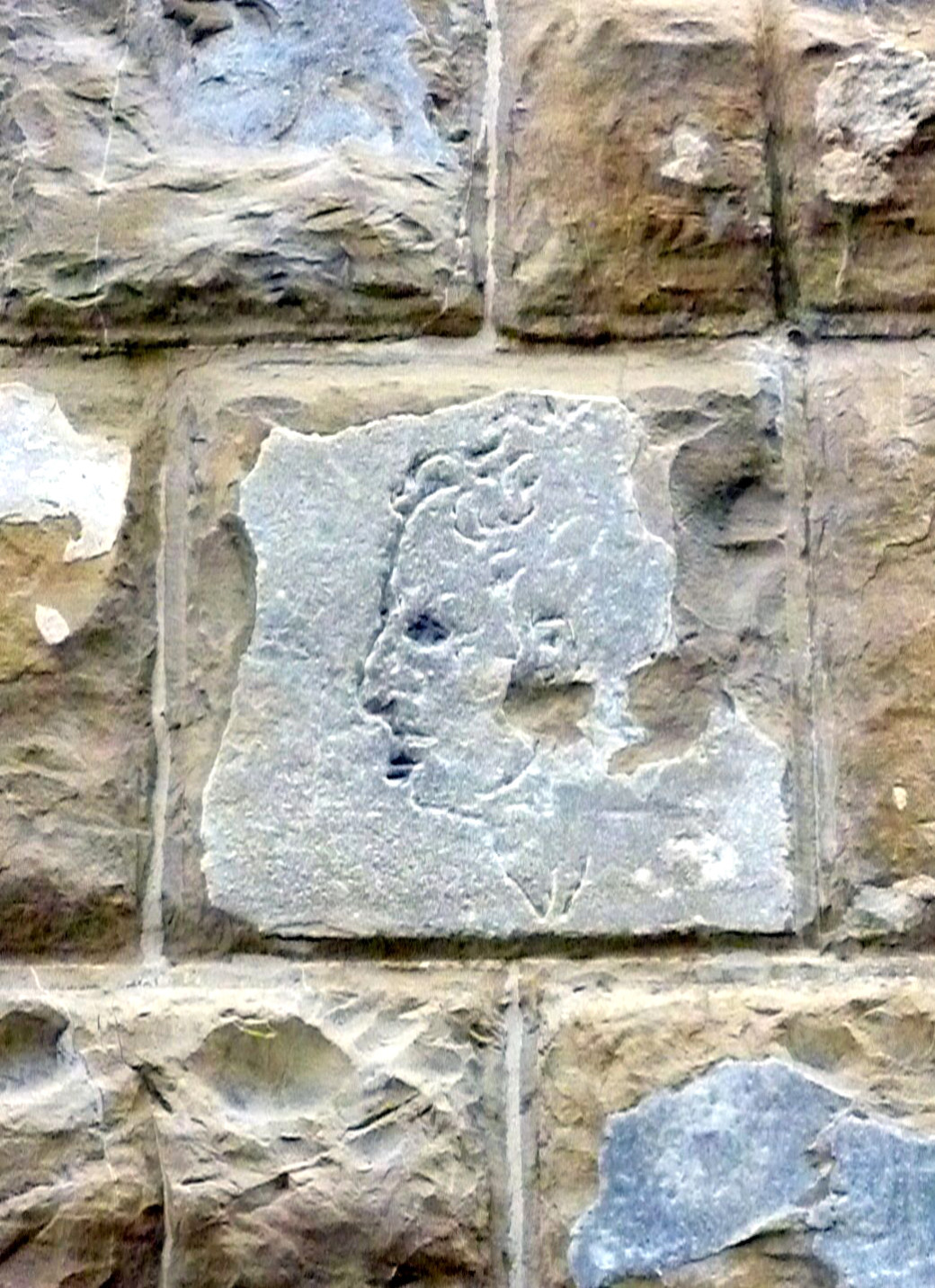 Volto di Michelangelo su Palazzo Vecchio
Volto di Michelangelo su Palazzo VecchioThe ever open window
In Piazza della Santissima Annunziata we find Palazzo Grifoni, which is said to be haunted by the ghost of a young woman. The story goes that the woman lived in the building with her beloved husband, but one day he was called to arms with the other Florentine nobles. At the moment of departure, she looked out of the window of the house to greet him and watched him leave until he disappeared among the palaces. From then on, the woman never moved from the window, which was always open, and for months she watched the piazza day and night in the hope of seeing her beloved return. Waiting and despair led to her death. When, after her funeral, her relatives went to the house to clean it up, they also closed the famous window, but this gave rise to strange phenomena such as objects flying and furniture moving. The relatives, therefore, decided to reopen the window, which remains open to this day. It is the one on the first floor, towards the corner that links the palace to the Loggia dei Servi di Maria.
You cannot count the bees
On the back of the pedestal of the equestrian statue of Ferdinando I de’ Medici, in the centre of Piazza Santissima Annunziata, we find a swarm of bees arranged in concentric circles around the queen bee. According to tradition, the bee represents the Grand Duchy of Tuscany (headed by Ferdinand I himself), while the bees are the faithful and industrious Florentines. The work is particular as it seems impossible to count the bees without touching or pointing at them due to the concentric circles and very similar figures that make one lose count. Whoever succeeds is supposed to be extremely fortunate.
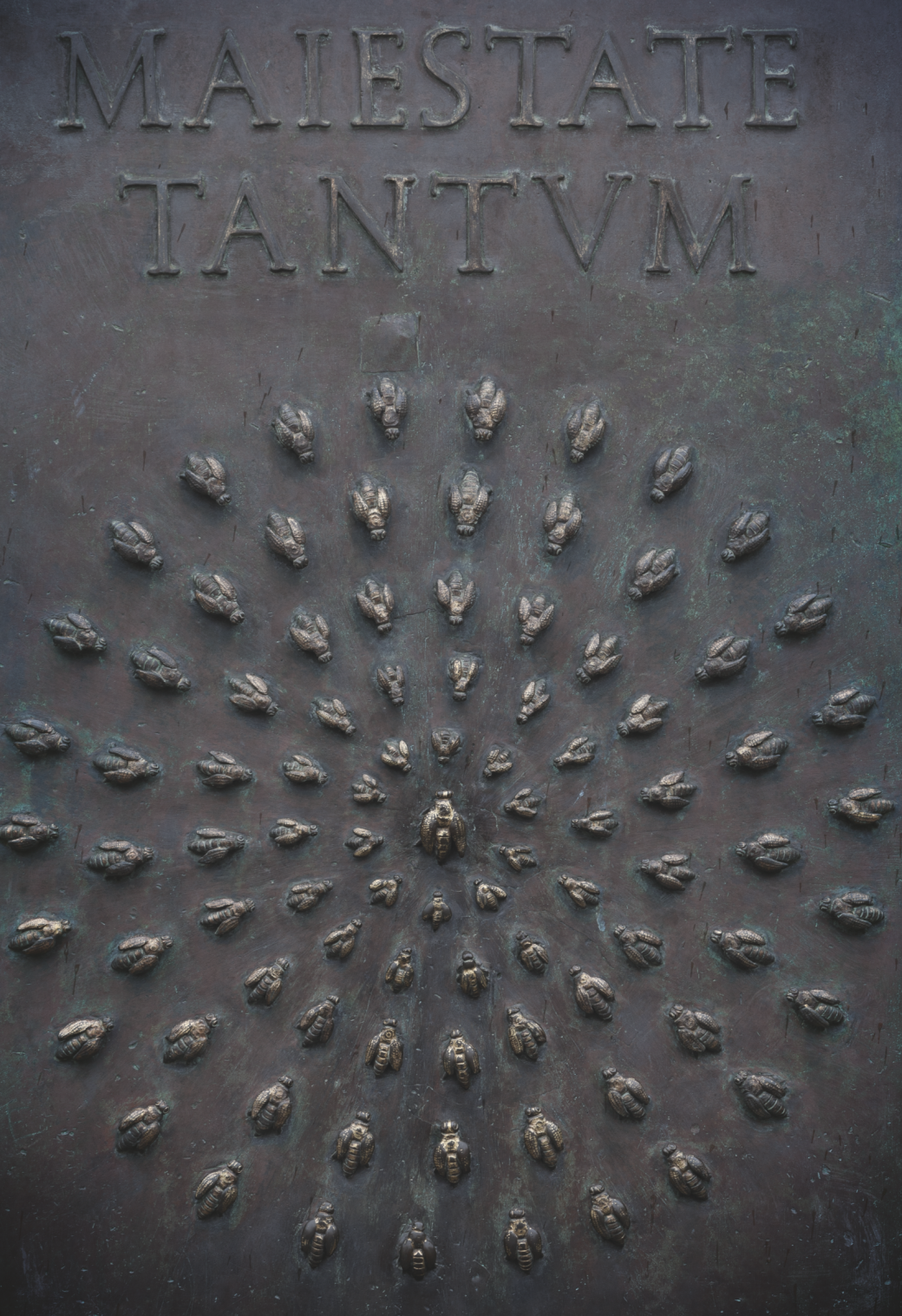 Bees that can't be counted in Piazza della Santissima Annunziata
Bees that can't be counted in Piazza della Santissima AnnunziataThe wrong stone
Facing Palazzo Pitti, move to the left of the entrance door, just after the second window at the bottom you will see a very long stone (it is said to be about ten metres long) flanked by one much shorter than the others. They are not here by chance. Apparently Luca Pitti himself wanted them. The longest stone of all, in fact, symbolises him, joyful and powerful. The shorter one represents his rivals, small and insignificant, envious that Luca Pitti had been able to accumulate enough wealth and success to build such a princely palace. What he did not know was that his rivals were the Medici themselves, who later became the masters of the palace!
The inverted balcony
In Borgo Ognissanti, at number 12, there is a very unusual balcony featuring inverted architectural elements. The reason for this strange construction seems to have been a confrontation between the owner of the house, one Baldovinetti, who wanted a beautiful and imposing balcony, and Alessandro de’ Medici, who issued an order in 1530 forbidding architectural elements that were too conspicuous and cumbersome, since the streets of the city were rather narrow. Baldovinetti refused to renounce his balcony and, finally, Alessandro de’ Medici authorised him to build the balcony but on one condition, that it would be inverted.
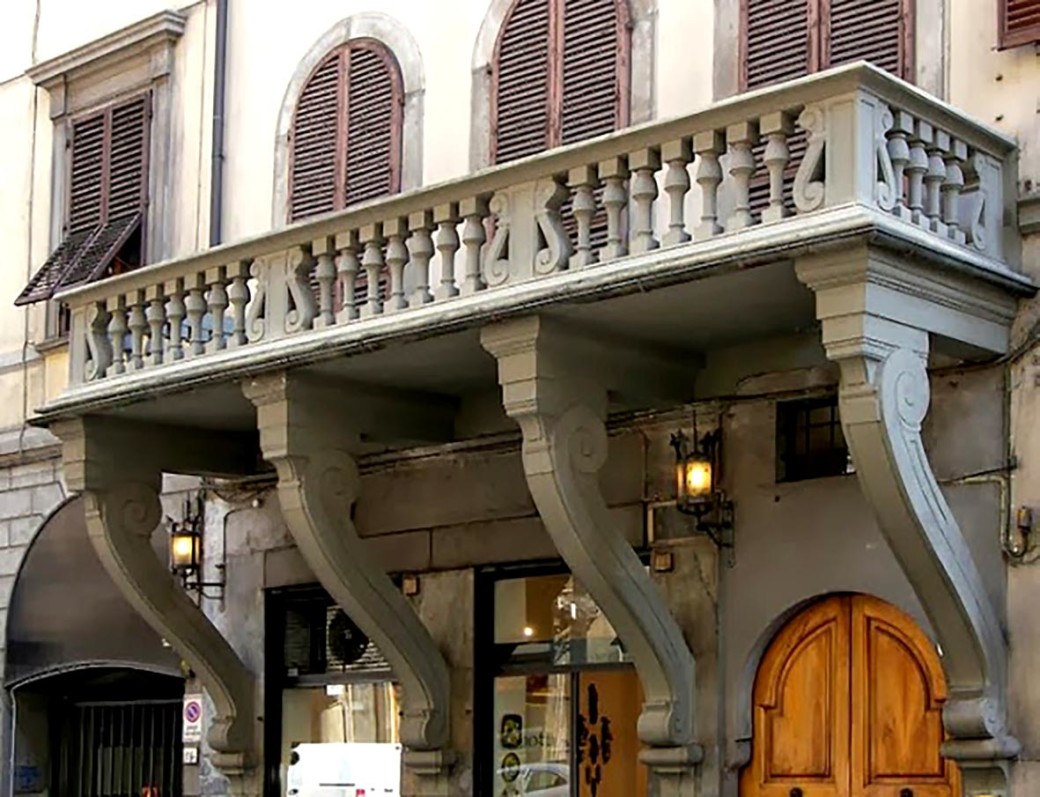 Il Balcone Rovesciato
Il Balcone Rovesciato





